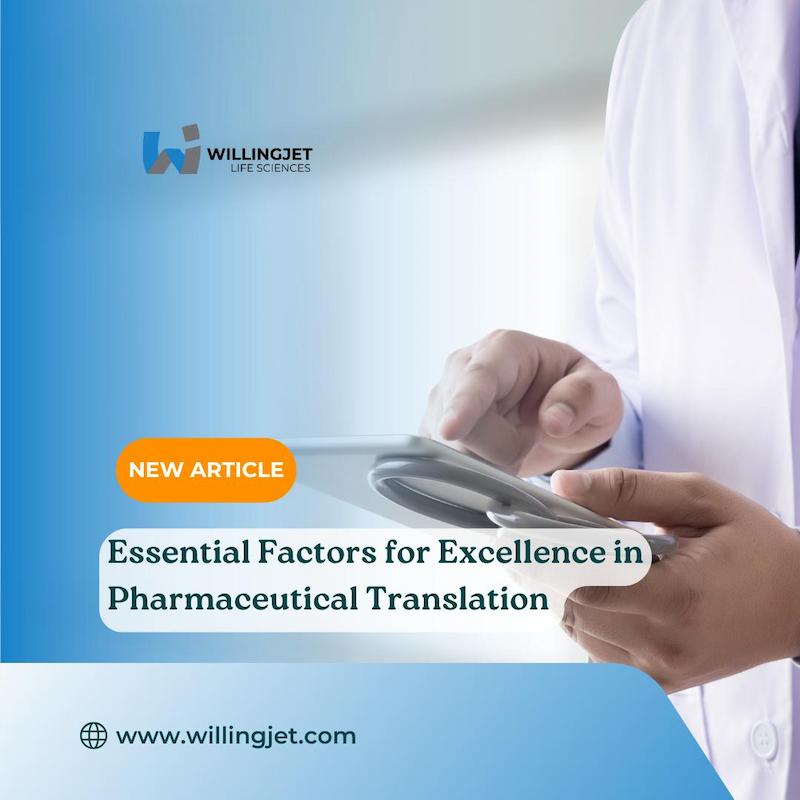
As the globalization of the pharmaceutical industry expands, the need for precise pharmaceutical translation has never been more critical. Accurate translation is necessary not only to comply with complex regulatory requirements but also to ensure patient safety and the successful entry of pharmaceutical products into the market. From clinical trials to drug labeling, precise translation helps to ensure that life-saving medications are administered effectively and safely across different regions. This article explores the key factors underpinning high-quality pharmaceutical translations, offering practical insights and a framework for the evaluation of translation quality.
Pharmaceutical translation is a specialized field that goes beyond fluency in a particular language. Translators must also possess an in-depth understanding of medical terminology, regulatory processes, and cultural nuances. Whether translating clinical trial reports, regulatory submissions, or drug labels, even the smallest error could have significant consequences for patient safety, product efficacy, or regulatory approval.
Scientific language: In pharmaceutical translation, scientific rigor is paramount. Translators must have a deep understanding of medical and pharmacological terminology with terms such as “pharmacokinetics,” “biologics,” and “adverse drug reactions” requiring precise translation to avoid confusion that could compromise patient safety. For example, translating APIs incorrectly could lead to misunderstandings about the formulation or usage of a drug.
Dosage and measurements: Pharmaceutical documents often involve precise dosage instructions, measurement conversions, and guidelines for administering drugs. Errors in translating units of measurement (e.g., milligrams to micrograms, milliliters to teaspoons) could lead to dangerous consequences. For example, translating "take 20 mg" as "take 200 mg" could result in a lethal overdose.
Detailed descriptions: Pharmacological documents contain highly technical data, such as chemical formulas, clinical trial results, and drug interactions. These data must be translated exactly, as even minor discrepancies can compromise regulatory approval or misunderstandings about a drug’s side effects. For instance, translating clinical trial data incorrectly could skew the interpretation of the safety and/or efficacy of a drug, thereby impacting upon regulatory approval.
Consistency of terminology: Consistency in terminology is crucial. If a drug is referred to by its generic name in one section, the same name should be used throughout the document. Inconsistent use of terms such as “adverse effects” or “contraindications” can create confusion, reducing the reliability and clarity of the document. Translators must also maintain consistency across different documents. For example, the terminology used in a clinical trial report should match that used in the labeling of a drug to avoid confusion.
Formatting: Pharmaceutical documents are subject to strict regulatory formatting rules. For example, when submitting documents to regulatory authorities like the U.S. Food and Drug Administration (FDA) or the European Medicines Agency (EMA), documents such as clinical trial reports and regulatory submissions must adhere to precise formatting requirements, including font size, paragraph spacing, and margin width. Failure to follow these guidelines could result in a document being rejected, thereby delaying the release of a drug on the market and increased costs.
Audience-appropriate language: Pharmaceutical documents are designed for both medical professionals and patients. When translating patient leaflets or instructional guides, the language must be simple and clear, avoiding jargon that might confuse non-medical audiences. For example, phrases such as "take one tablet every eight hours" should be translated in a way that ensures patients with varying levels of literacy can understand the instructions.
Logical flow: A clear and logical progression of information is essential, particularly in documents like clinical trial reports or patient information leaflets. For example, translating the results of a clinical trial should follow a coherent structure that starts with the methodology, followed by results, discussion, and conclusions. Such a logical flow helps regulatory authorities to efficiently assess the drug being reported upon for compliance and accuracy.
Labeling standards: Pharmaceutical companies must comply with regulatory standards that vary across countries and regions for drug labeling, packaging inserts, and patient leaflets. For example, the EMA has specific labeling requirements that differ from those of the FDA. Accurate translation ensures that drug labels meet these regulatory standards, preventing delays or potential fines. Failure to comply due to poor translation could lead to a delay in market entry, in more serious cases, product recalls.
Safety information: Translations of safety information, such as contraindications, side effects, and drug interactions, must be exact. This is especially crucial for high-risk drugs where the margin for error is minimal. For instance, oncology drugs often have a narrow therapeutic index, and a mistranslation of safety information could lead to life-threatening situations. The translation must accurately convey the potential risks of a drug to ensure patient safety.
Cultural sensitivity: Pharmaceutical translations must respect cultural differences. Certain terms, phrases, or images that are acceptable in one cultural context may not be suitable in another. For example, the phrase "take with food" might be interpreted differently across regions, depending on local dietary habits. Translators need to be aware of these cultural nuances to ensure that the translation is not only accurate but also appropriate for the local population.
Local practices: Understanding local medical practices is also critical. In some regions, traditional medicine plays a significant role in healthcare. In certain Asian markets, for example, traditional medicine is commonly used alongside conventional treatments. Translators may need to include references to both forms of treatment to ensure that the translation is culturally and contextually relevant, providing clarity for patients who may be accustomed to alternative health practices.
Document structure: Pharmaceutical documents such as regulatory submissions and clinical trial reports must follow a prescribed structure. This typically includes clearly marked sections using headings, subheadings, and bullet points to organize the information. A well-structured document ensures that regulatory bodies, healthcare professionals and patients can more easily access the information they need.
Visual consistency: Pharmaceutical translations must preserve the visual integrity of the original document, especially when translating marketing or labeling materials. Any deviation in font type, color scheme, or layout could lead to confusion and diminish the professionalism of the document. Consistent use of visual elements ensures that the document meets industry standards and helps to maintain the trust of regulatory bodies and healthcare professionals.
To ensure that pharmaceutical translations meet high standards, it is essential to establish a robust evaluation framework. Below is an expanded version of a scoring and rubric system for the effective evaluation of translation quality.
Excellent: Meets all standards without any errors or issues.
Good: Meets most standards with minor errors that do not affect clarity, patient safety, or regulatory compliance.
Needs improvement: Contains significant errors affecting clarity, patient safety or regulatory compliance.
Excellent ≥4.5
Good ≥ 3.5:
Needs improvement ≥ 2.5
Factor | Description | Evaluation Focus | Scoring Guidelines |
Accuracy | Precision in translation of technical terms, measurements, and descriptions | Ensure all terminology, measurements, and data have been translated accurately. | Excellent: No errors Good: Minor errors Needs improvement: Major inaccuracies |
Consistency | Uniformity in terminology and style | Confirm consistent use of terminology, tone, and formatting. | Excellent: Fully consistent Good: Minor inconsistencies Needs improvement: Frequent inconsistencies |
Clarity | Balancing technical accuracy with readability. | Simplify complex language while maintaining accuracy of translation. | Excellent: Clear and logical Good: Slightly complex Needs improvement: Difficult to understand |
Regulatory compliance | Compliance with regional regulatory guidelines | Verify adherence to regulatory guidelines and standard relating to safety information. | Excellent: Fully compliant Good: Minor issues Needs improvement: Significant regulatory or safety gaps. |
Cultural sensitivity | Adaptation of content for cultural relevance | Ensure the translation respects local norms and practices. | Excellent: Fully adapted Good: Minor adjustments needed Needs improvement: Culturally inappropriate |
Layout and formatting | Professional presentation with clear structure | Ensure clear, consistent formatting that enhances readability. | Excellent: Professional layout Good: Minor issues Needs improvement: Poorly laid out and formatted. |
Pharmaceutical translation plays a crucial role in the safe and effective delivery of healthcare products worldwide. Given the complexity and importance of the industry, accurate and culturally sensitive translations are vital for regulatory compliance and patient safety. By prioritizing accuracy of terminology, consistency, clarity, regulatory compliance, cultural sensitivity, and professional formatting, pharmaceutical companies can ensure that their communications are not only accurate but also trustworthy, paving the way for better access to life-saving treatments globally.
